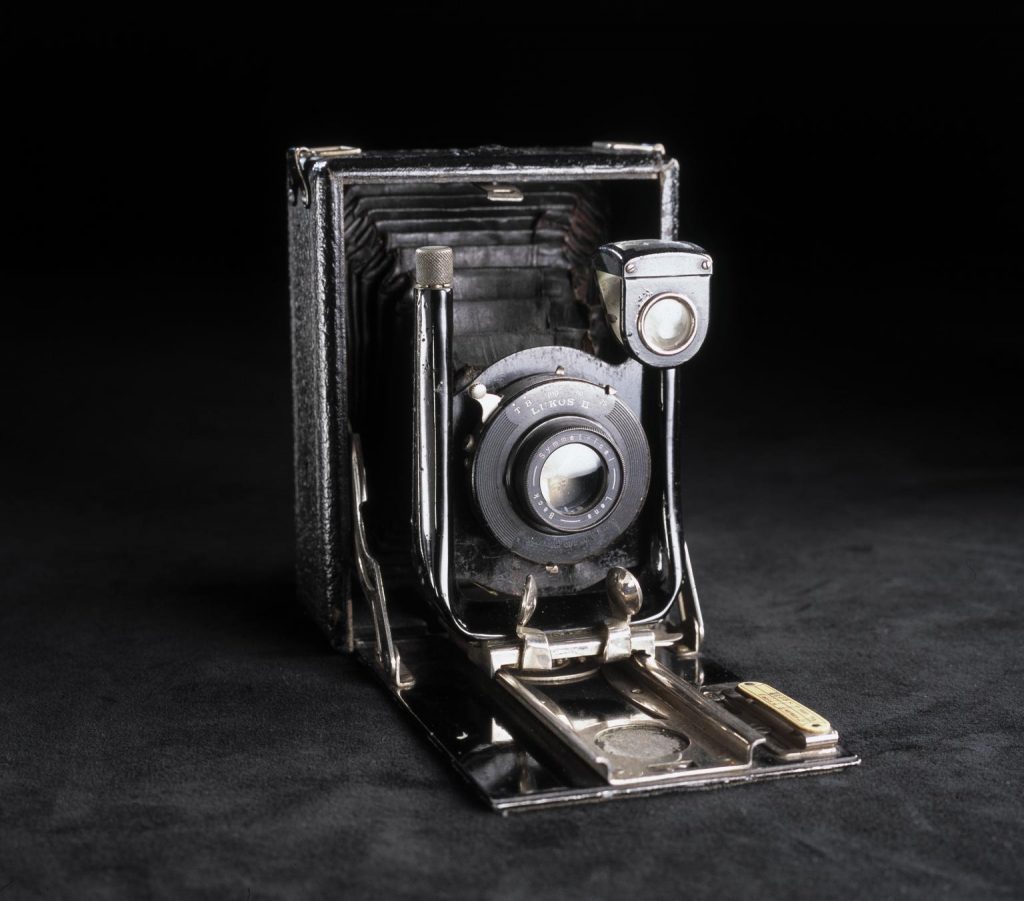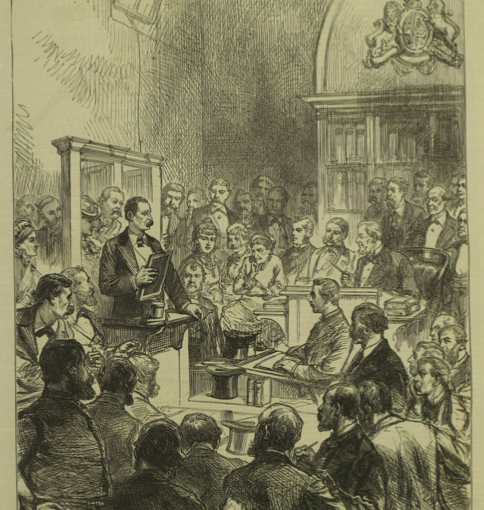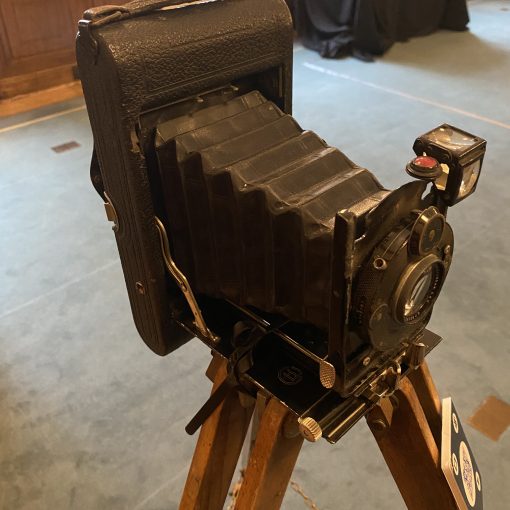Professor Christine Ferguson, University of Stirling
Welcome to ‘The Media of Mediumship’, an AHRC-funded project produced by the University of Stirling and the Science Museum Group, in collaboration with Senate House Library.
Look closely at the picture below.

Image courtesy of Science Museum Group, © The Board of Trustees of the Science Museum, London
What do you see? An old camera, once state-of-the-art, now obsolete. Heavy and cumbersome when contrasted with today’s camera phones, and certainly less immediately gratifying in its results. A solid and material anchor to an eclipsed technological past.
Now look again. Imagine a young girl holding it in her hands on a beautiful but dull summer afternoon, near the tail end of a war that has gone on longer than anyone could have imagined. She is with her cousin. They decide to play a game (or do they?). The shutter opens, becomes a portal to another world. Radiant, vibrating figures of angelic loveliness—or kitschy cuteness— dance before it. Proof is acquired, but exactly quite of what, no one will be able to agree for quite some time. Indeed, for some, the question remains opens.
It is, of course, the ‘Cameo’ camera used by Elsie Wright and Frances Griffiths in the production of the famous ‘Cottingley Fairies’ photographs. Now held in the National Science and Media Museum in Bradford, the Cameo is one of the many technological instruments and everyday objects whose occultural histories of use our project aims to tell. How, it asks, were such seemingly mundane devices repurposed to seek or imagine contact with otherworldly entities and departed spirits? And what can learn about such uses by recreating them?
This project originated in the ‘Popular Occulture in Britain, 1875-1947‘ (POB) AHRC network that I led with my colleague Dr Andrew Radford between 2016-18. Inspired by Christopher Partridge’s declaration that ‘Occulture is Ordinary’,[i] our network showed how occult beliefs and unorthodox spiritual practices, far from being secret or hidden away, became integral to British popular culture in the period of our study.
As a literary scholar, my interests initially lay in textual representations — some fictional, some experiential — of spirit mediumship and magical practice. But as our POB network proceeded, it became increasingly clear to me that a text-based approach was not enough. The historical figures we studied did not encounter the other world on the page alone, but in everyday practice and scientific experiment. If we really wanted to understand how occulture became ordinary, we needed to understand the objects through which this process happened, to immerse ourselves in the media environments that made it seem possible for the first time to record and photograph the spirits of the dead.
This project is co-led by Dr Efram Sera-Shriar, a historian of science and Senior Researcher at the Science Museum Group, whose work had also convinced him of the need for a better understanding of the material cultures of modern spiritualism and psychical research. We met in 2017 when he invited me to participate in the ‘Science of Ghosts 1850-1916’ project he then led at Leeds Trinity University, a network which sought to re-examine the interactions between professional scientists and spiritualists in the late nineteenth and early twentieth centuries. His monograph on this topic, Psychic Investigators, is forthcoming with the University of Pittsburgh Press.
‘The Media of Mediumship’ emerges out of a series of 2019 meetings and brainstorming sessions between Efram, and colleagues at Senate House Library, and myself, in which we considered how we might create and share new stories about objects whose solid and scientific appearance concealed a supernatural history. These would be told not just through expert talks, but through recreations, technical workshops, and creative performances led by sound artists, fine-art photographers, stage magicians, and radio dramatists.
We run this project in a very different world than the one in which it was first conceived. When the grant was awarded, most of the country was in partial or total lockdown as a result of the Covid-19 pandemic. While, at the time of writing, things are slowly starting to open up, the British social and cultural landscape remains utterly transformed. As our team redesigns face-to-face events for digital and socially-distanced delivery, we find ourselves in unexpected affinity with the figures and objects whose stories we will share: they too sought ways of communicating, testifying, and forming community when physical co-presence was no longer possible. We hope you will join us as we reach out to touch the past in these intangible times.
[i] Christopher Partridge, ‘Occulture is Ordinary’, in Contemporary Esotericism, ed. by Egil Asprem and Kennet Granholm (Sheffield: Equinox, 2013), pp. 113-133.



